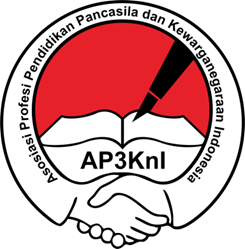The Impact of the COVID-19 Pandemic at the Makassar Shipping Science Polytechnic
DOI: https://doi.org/10.26618/jed.v7i2.6871
Covid-19, Pandemic, E-learning, Higher Education, Information Technology, Pandemi, Pendidikan Tinggi, Teknologi Informasi
Abstract
The spread of COVID-19 is a threat to humanity because this pandemic has forced many global activities to close, including educational activities. To reduce the spread of the virus, educational institutions are forced to turn to e-learning using available educational platforms, despite the challenges that challenge this transformation. To further explore the potential challenges faced by learning activities, this study focuses on e-learning from the perspective of cadets and teachers in using and implementing e-learning systems in universities during the COVID-19 pandemic. This research targets the community, including cadets and teaching staff at the Engineering Study Program at the Makassar Marine Science Polytechnic. A descriptive-analytical approach was applied, and statistical methods analyzed the results. There are two types of questionnaires designed and distributed: student questionnaires and teacher questionnaires. Four dimensions have been highlighted to achieve the expected results: the extent to which e-learning is used during the COVID-19 pandemic, the advantages, disadvantages, and application of E-learning at the Makassar Shipping Science Polytechnic. By analyzing the results, we achieved an exciting result using some of the problems, challenges and advantages of using an e-learning system over traditional education in higher education in general and during times of emergency.
Penyebaran COVID-19 menjadi ancaman bagi umat manusia, karena pandemi ini memaksa banyak kegiatan global ditutup, termasuk kegiatan pendidikan. Untuk mengurangi penyebaran virus, institusi pendidikan terpaksa beralih ke e-learning menggunakan platform pendidikan yang tersedia, meskipun ada tantangan yang dihadapi transformasi mendadak ini. Untuk lebih mendalami potensi tantangan yang dihadapi kegiatan pembelajaran, fokus kajian ini adalah pada e-learning dari perspektif taruna dan pengajar dalam menggunakan dan mengimplementasikan sistem e-learning di politeknik negeri selama masa pandemi COVID-19. Penelitian ini menyasar masyarakat yang meliputi taruna dan staf pengajar pada Program Studi Teknika di Politeknik Ilmu Pelayaran Makassar. Pendekatan deskriptif-analitis diterapkan dan hasilnya dianalisis dengan metode statistik. Ada dua jenis angket yang dirancang dan disebarkan, yaitu angket siswa dan angket pengajar. Empat dimensi telah disorot untuk mencapai hasil yang diharapkan, yaitu sejauh mana penggunaan e-learning selama pandemi COVID-19, kelebihan, kekurangan dan hambatan penerapan E-learning di Politeknik Ilmu Pelayaran Makassar. Dengan menganalisis hasil, kami mencapai hasil yang menggembirakan yang menyoroti beberapa masalah, tantangan, dan keuntungan menggunakan sistem e-learning daripada pendidikan tradisional di pendidikan tinggi pada umumnya dan selama masa darurat.
References
Abdullah, F. M., Maatuk, A. M., Mohammed, A. A., & Elberkawi, E. K. (2019). Application of electronic management system in governmental institutions: An empirical study on the Libyan civil registration. PervasiveHealth: Pervasive Computing Technologies for Healthcare. https://doi.org/10.1145/3368691.3368710
Aboagye, E., Yawson, J. A., & Appiah, K. N. (2020). COVID-19 and E-Learning: the Challenges of Students in Tertiary Institutions. Social Education Research, 2(1), 1–8. https://doi.org/10.37256/ser.212021422
Ali, M., Khaled Hossain, S. M., & Ahmed, T. (2018). Effectiveness of E-learning for university students: evidence from Bangladesh. Asian Journal of Empirical Research, 8(10), 352–360. https://doi.org/10.18488/journal.1007/2018.8.10/1007.10.352.360
Aljawarneh, S. A. (2020). Reviewing and exploring innovative ubiquitous learning tools in higher education. Journal of Computing in Higher Education, 32(1), 57–73. https://doi.org/10.1007/s12528-019-09207-0
Aljawarneh, S., Maatuk, A. M., & Ali, A. (2012). Security Issues in Cloud Computing: A Perspective. The Proceedings of the 9th International Conference on Electronics, Computer and Computation (ICECCO’12). https://doi.org/10.1007/978-981-15-7421-4_6
Altawaty, J. A., Benismail, A., & Maatuk, A. M. (2020). Experts opinion on the IT skills training needs among healthcare workers. PervasiveHealth: Pervasive Computing Technologies for Healthcare. https://doi.org/10.1145/3410352.3410790
Arkorful, V., & Abaidoo, N. (2015). The role of e-learning, advantages and disadvantages of its adoption in higher education. International Journal of Instructional Technology and Distance Learning, 12(1), 29–42.
Gaebel, M., Kupriyanova, V., Morais, R., & Colucci, E. (2014). E-Learning in European Higher Education Institutions. December, 1–92. http://www.eua.be/Libraries/publication/e-learning_survey.pdf?sfvrsn=2
Harandi, S. R. (2015). Effects of e-learning on Students’ Motivation. Procedia - Social and Behavioral Sciences, 181, 423–430. https://doi.org/10.1016/j.sbspro.2015.04.905
Lara, J. A., Aljawarneh, S., & Pamplona, S. (2020). Special issue on the current trends in E-learning Assessment. Journal of Computing in Higher Education, 32(1), 1–8. https://doi.org/10.1007/s12528-019-09235-w
Lizcano, D., Lara, J. A., White, B., & Aljawarneh, S. (2020). Blockchain-based approach to create a model of trust in open and ubiquitous higher education. Journal of Computing in Higher Education, 32(1), 109–134. https://doi.org/10.1007/s12528-019-09209-y
Mödritscher, F. (2006). e-Learning Theories in Practice: A Comparison of three. Journal of Universal Science and Technology of Learning (JUSTL), 0(0), 3–18. http://www.justl.org/justl_0_0/elearning_theories_in_practice
Ms, P., & Toro, U. (2013). A Review of Literature on Knowledge Management using ICT in Higher Education. 4(1), 62–67.
Mukhtar, K., Javed, K., Arooj, M., & Sethi, A. (2020). Advantages, limitations and recommendations for online learning during covid-19 pandemic era. Pakistan Journal of Medical Sciences, 36(COVID19-S4), S27–S31. https://doi.org/10.12669/pjms.36.COVID19-S4.2785
Oludare Jethro, O., Moradeke Grace, A., & Kolawole Thomas, A. (2012). E-Learning and Its Effects on Teaching and Learning in a Global Age. International Journal of Academic Research in Business and Social Sciences, 2(1), 2222–6990.
Samir Abou El-Seoud, M., Taj-Eddin, I. A. T. F., Seddiek, N., El-Khouly, M. M., & Nosseir, A. (2014). E-learning and students’ motivation: A research study on the effect of e-learning on higher education. International Journal of Emerging Technologies in Learning, 9(4), 20–26. https://doi.org/10.3991/ijet.v9i4.3465
Sathishkumar, V., Radha, R., Saravanakumar, A., & K. Mahalakshmi. (2020). E-Learning during Lockdown of Covid-19 Pandemic: A Global Perspective. International Journal of Control and Automation, 13(June), 1088–1099.
Selim, H. M. (2007). E-learning critical success factors: An exploratory investigation of student perceptions. International Journal of Technology Marketing, 2(2), 157–182. https://doi.org/10.1504/IJTMKT.2007.014791
Yengin, I., Karahoca, A., & Karahoca, D. (2011). E-learning success model for instructors’ satisfactions in perspective of interaction and usability outcomes. Procedia Computer Science, 3, 1396–1403. https://doi.org/10.1016/j.procs.2011.01.021
Zare, M., Sarikhani, R., Salari, M., & Mansouri, V. (2016). The impact of E-learning on university students’ academic achievement and creativity. Journal of Technical Education and Training, 8(1), 25–33.



